Recent Articles
Popular Makes
Body Types
5 Japanese Convertible Cars
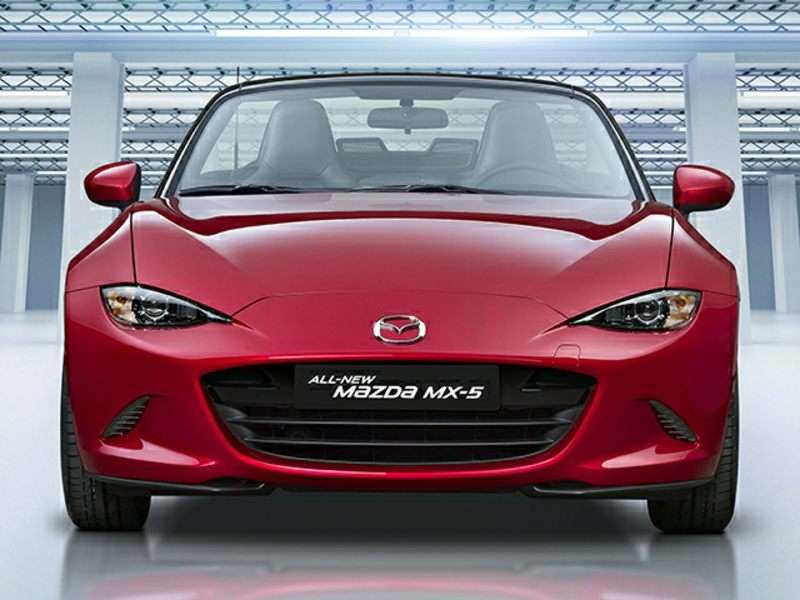
2016 Mazda MX-5 Miata ・ Photo by Mazda
A cursory glance at the website of most European car brands will reveal that, across the Atlantic, they’re in love with the convertible. Most manufacturers offer at least one, and a few brands even offer open-air variants of multiple similar models. American brands usually have a couple convertibles on offer, although the recent focus on efficient compacts and ongoing obsession with SUVs means that convertibles generally aren’t volume sellers. And frankly, it’s hard to tell what’s going on with the Japanese brands: at one point in the mid-2000s, Toyota offered a convertible version of the Camry, though right now, the focus seems to be on quality over quantity. (And even then, a couple of the cars we’ll be discussing are leftovers—though desirable ones!—from 2015.) Here’s an in-depth look at five Japanese drop-tops currently on the American market.
2015 Infiniti Q60
Just putting it out there: the Infiniti Q60 convertible, our first in the list of 5 Japanese convertible cars, is stuck in last year (and so is the Q50 coupe on which it’s based, for what that’s worth). Infiniti is giving the Q60 lineup the year off while they retool the coupe and, eventually, the convertible; both are are expected to be reintroduced for the 2017 model year. In the meantime, Infiniti’s keeping a healthy supply of 2015 Q60s flowing to dealer lots, and it’s well worth checking out if a Japanese convertible is on the shopping list. Not every coupe and convertible pairing is successful; often, trading out the fixed roof for a drop-top causes some undesirable side effects. The Infiniti Q60 is actually rather successful, though, thanks to a slim 3-piece roof that mimics the sleek lines of the original and stows easily in the trunk.

Photo by Infiniti Media
2015 Infiniti Q60 (continued)
The 2015 Infiniti Q60 convertible comes powered by a 3.7-liter V6 engine that provides 330 horsepower. This engine is, of course, shared from the coupe, and though it doesn’t feel quite as potent in the convertible (thanks to the extra weight of the folding top and the necessary mechanical parts) most drivers won’t even notice. The IPL trim level evens the score a bit, squeezing 343 horsepower from the engine. Rear-wheel drive is standard with the Q60 convertible, and drivers get the choice of a 7-speed automatic (with paddle shifters) or 6-speed manual gearbox. The Q60 convertible can seat four passengers, although some will likely find the backseat to be a tight fit. The cabin in this Japanese convertible car is a bit dated, but highly customizable at ordering time, and Infiniti further sweetens the deal by offering lots of optional equipment.
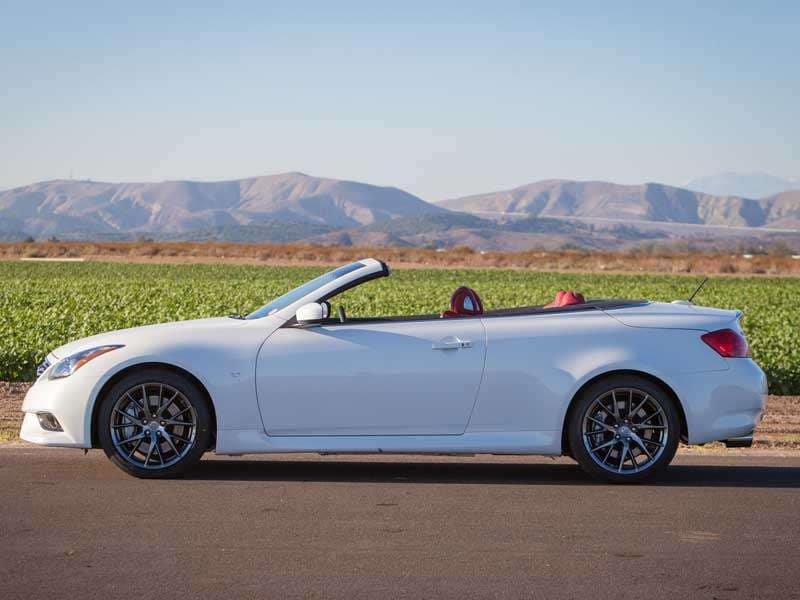
2015 Lexus IS C
Like the Infiniti Q60, the 2015 Lexus IS C is a Japanese convertible that’s still available on dealer lots, for the time being. Unlike the Infiniti, though, this drop-top version of the IS sedan is unlikely to return. That means the Lexus lineup is currently void of a convertible option, and though there are some concept sketches floating around, it doesn’t seem like the brand has any solid plans to bring in a new convertible model. As long as the 2015 IS C is around, though, it’s a good option for a four-passenger convertible. The Lexus IS’ cabin is noted for having a comfortable and intuitive layout, supportive front seats, and good build quality, with high-end materials and finishes.
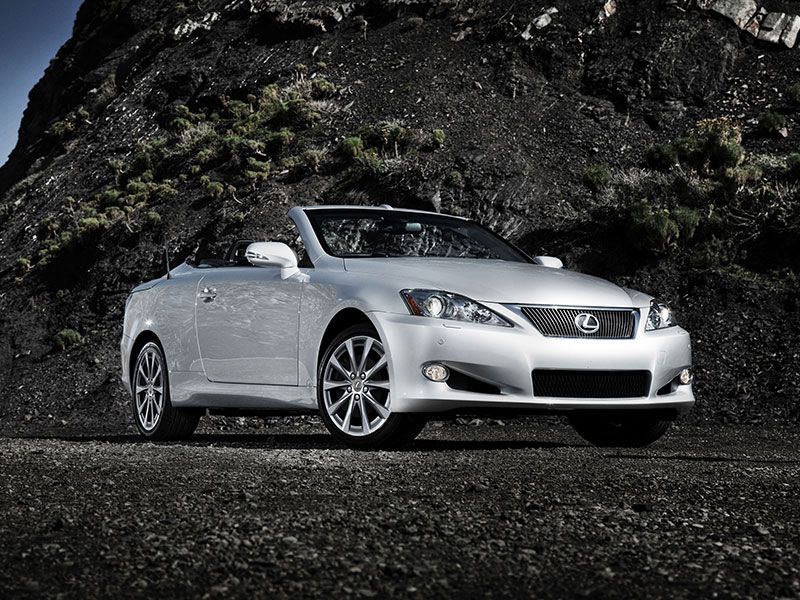
2015 Lexus IS C (continued)
The 2015 Lexus IS C is available in two trim levels, based on the sedan’s trim levels. The IS 250 C is the base model for this Japanese convertible car, and comes powered by a 2.5-liter V6 engine that makes 204 horsepower, paired to a six-speed automatic transmission. Stepping up to the IS C 350 gets a 3.5-liter V6, output of 306 horsepower, and an eight-speed automatic transmission. Both models are rear-wheel drive (unlike the IS sedan, there’s no all-wheel-drive option). The F SPORT trim level, which is an upgrade package with track-ready features and equipment, is also offered, although availability may be limited as the 2015 IS C’s remaining numbers dwindle down.
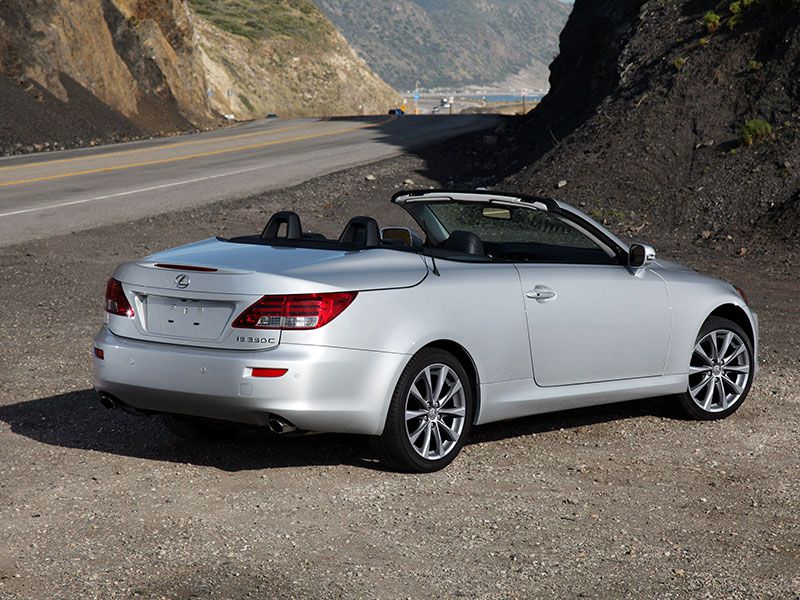
2016 Nissan 370Z
Though the 2016 Nissan 370Z is perhaps most recognizable in its popular coupe format, the 370Z Roadster is an affordable way to get into a Japanese drop-top (even though it carries a higher-than-average price premium over the base model). To be frank, it’s a bit dated, since it hasn’t been updated since the 2009 model year, which could make more modern competitors seem more appealing, especially from a value perspective. The argument could be made, though, that the 370Z is simply carrying on the tradition of the brand’s Z cars. The 370Z Roadster offers seating for two occupants.
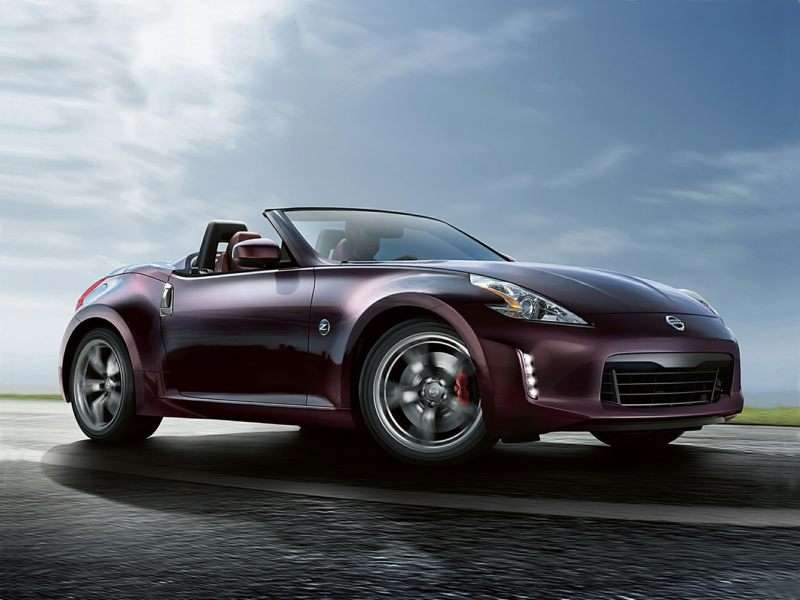
Photo by Nissan USA
2016 Nissan 370Z (continued)
For 2016, Nissan powers the 370Z convertible with a 3.7-liter V6 engine, and offers a 6-speed manual or 7-speed automatic transmission. Standard rear-wheel drive helps drivers make the most of the 370Z’s available 332 horsepower and 270 lb.-ft of torque. Steering and handling are impressive as well. The list of standard equipment on the 370Z might seem a little stingy considering the car’s cost compared to more modern competitors. While the 2016 Nissan 370Z’s cabin and cargo area are a little small, that is typically the case with roadsters, and the convenience of the power folding soft top might help even the score a little.
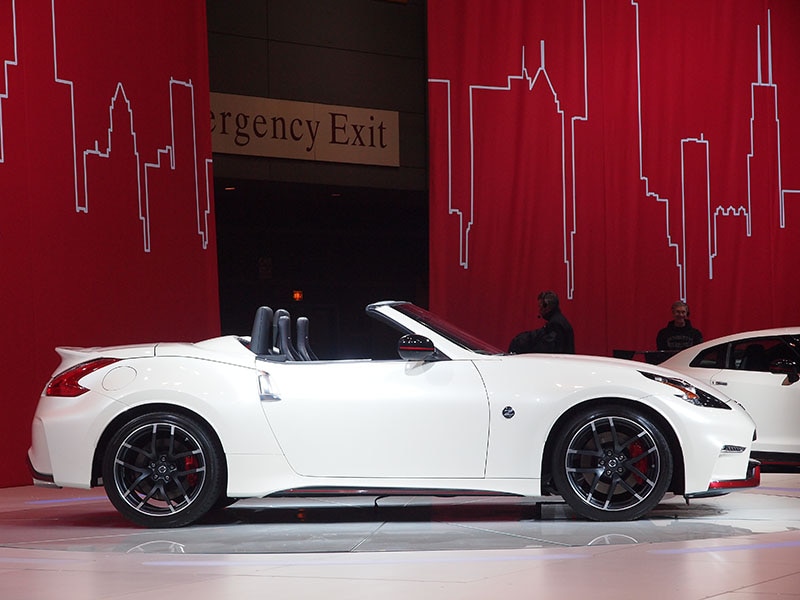
Photo by Megan Green
2016 Mazda MX-5 Miata
We really can’t talk about Japanese convertible cars without bringing up the Mazda MX-5 Miata. The Miata has the distinction of being the oldest Japanese convertible on the market. It is one of the most beloved sports cars of all time. It’s one of the most affordable roadsters available. And it exemplifies the saying that it’s more fun to drive a slow car fast than it is to drive a fast car slow. The Mazda MX-5 Miata is in its 25th year, and is totally redesigned for 2016, though Mazda wisely retained the spirit of the little roadster through this thorough update.
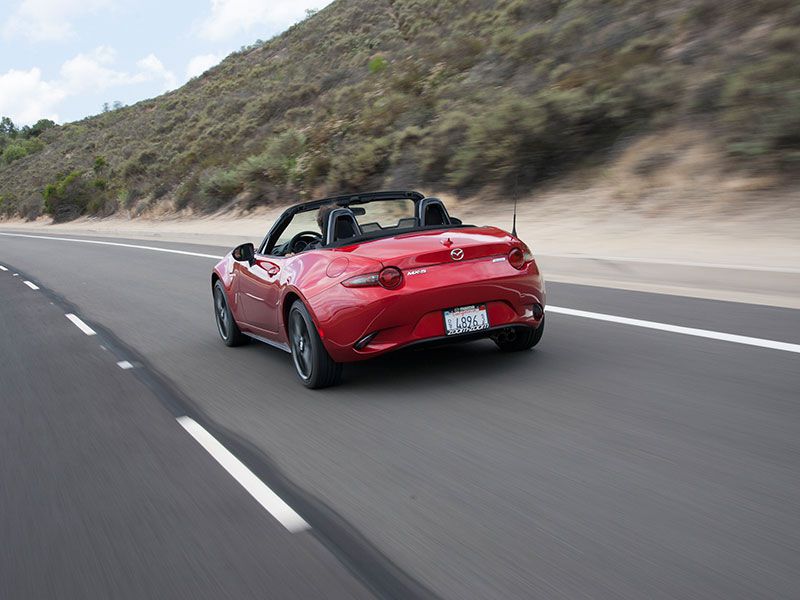
Photo by Mazda
2016 Mazda MX-5 Miata (continued)
The all-new 2016 Mazda MX-5 Miata features an updated drivetrain, which raised some eyebrows at the time of its introduction. That’s because, although torque was improved, the 2016 Miata actually took a slight hit in horsepower compared to the 2015 version. The engine in question, a 2.0-liter 4-cylinder that makes 155 horsepower and 148 lb.-ft of torque, comes paired with either a 6-speed manual or 6-speed automatic transmission, and rear-wheel drive is standard. For now, the redesigned Mazda Miata is only available with a soft top, although as you’ll see, that’ll soon change.
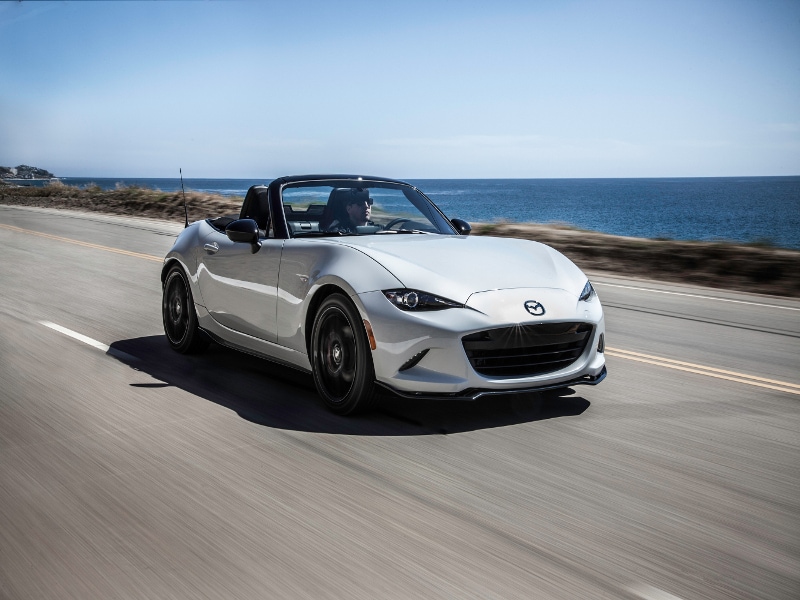
Photo by Mazda
2017 Mazda MX-5 Miata RF
The previous generation of the Mazda MX-5 Miata was offered in hardtop form, so it was only a matter of time before we saw a similar version of the new model. Unlike the 2006-2015 Mazda Miata hardtop, though, this one was introduced under its own name. Meet the 2017 Mazda MX-5 Miata RF (which stands for “retractable fastback”). As the new naming convention implies, this Miata’s constructed and styled a little differently than the regular folding softtop model. While the two Japanese convertible cars still share the same basic profile, the Miata RF’s fastback shape makes it look more like a coupe than a convertible, especially when examined from the rear three-quarter angle.

Photo by Mazda USA
2017 Mazda MX-5 Miata RF (continued)
Also, while looking at the new Mazda MX-5 Miata RF, it’s hard to figure out exactly where that retractable roof will go, especially since Mazda claims the power top can be operated while the car’s traveling up to 6 mph. When the roof is activated, the entire C-pillar area (the part that creates the “fastback” shape) lifts off the car’s haunches. The roof panel, which is actually two separate pieces, slips back and folds down into a storage area beneath the rear pillars. The rear pillars drop back into place, and the whole process is wrapped up in about 12 seconds. Otherwise, the 2017 Mazda MX-5 Miata RF features the same drivetrain as the traditional softtop, and the slight weight gain to accommodate the power roof components should offend the sensibilities of only the pickiest drivers.
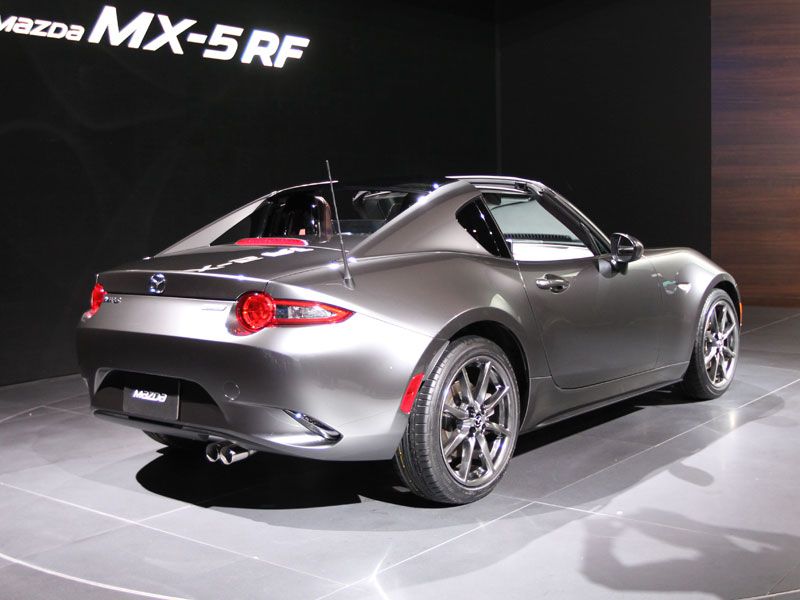
Photo by TJ Keon